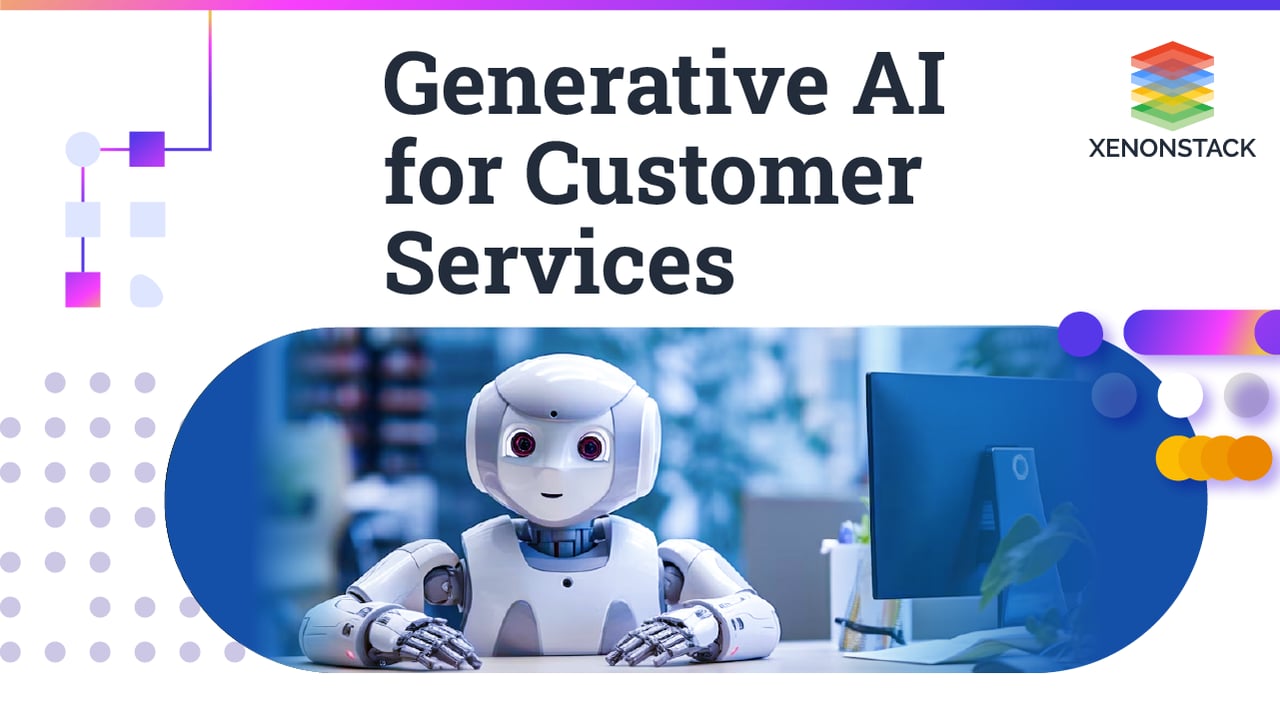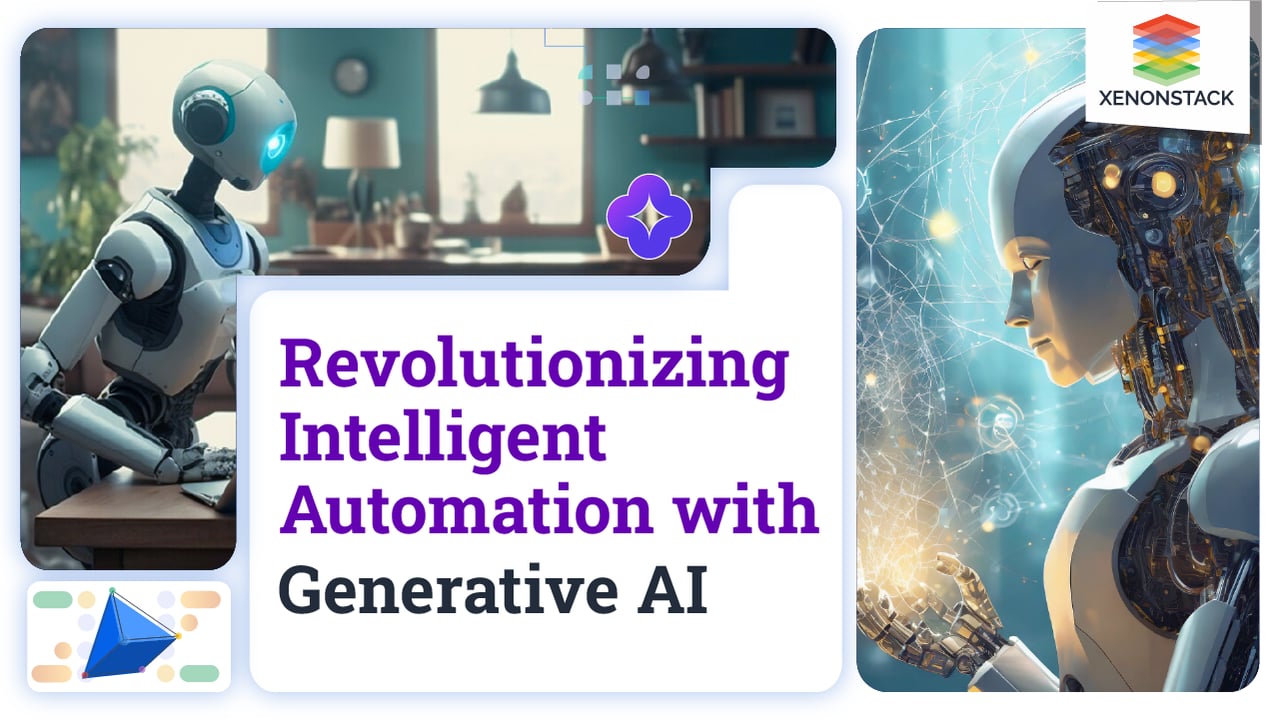
Introduction
The use of generative AI tools in software development has made a significant impact, offering various benefits, particularly in enhancing business productivity. According to a study by McKinsey, developers using generative AI can complete coding tasks almost twice as fast.
The study also noted that while generative AI greatly influences more straightforward coding tasks, its impact on complex ones is less pronounced. This suggests that concerns about AI replacing developers may not be warranted. However, there are numerous simple applications where AI can significantly accelerate team productivity and enhance developer experience.
Prior to delving into the specific effects of generative AI tools, it's crucial to touch upon general methods, frameworks, and best practices for improving developer productivity. Generative AI is just one of the many tools available to developers for this purpose.
Generative AI in Software Development: Key Models, Solutions, and Use Cases
In the realm of Generative AI in Software Development, generative AI models are revolutionizing how software is created and optimized. Leveraging Generative AI Architecture, these models can design and refine complex systems with remarkable precision. Generative AI Solutions with Private LLM offer tailored approaches to secure and efficient software solutions, while Generative AI Search enhances data retrieval processes. Beyond development, Generative AI in Contact Centres and Generative AI for Banking streamline customer interactions and financial services, respectively. In healthcare, Generative AI for Healthcare aids in diagnostics and treatment planning, while Generative AI for Digital Marketing drives personalized content creation. The impact extends to Generative AI for Smart Cities, improving urban management, and Generative AI For Retail, optimizing inventory and customer engagement. Platforms like Generative AI Platform and tools such as prompt engineering tools support these innovations, with initiatives like Pilot Generative AI showcasing early applications. Emphasizing the Responsible Use of Generative AI, the technology promises to drive Intelligent Automation with Generative AI and explore diverse Generative AI Use Cases across various Generative AI for Industries, setting new standards for efficiency and creativity in software development
Elevating Developer Productivity
Understanding and enhancing developers' productivity is a complex undertaking, as it involves more than just measuring lines of code or hours worked. To evaluate productivity accurately, it's essential to consider factors like customer satisfaction and the overall impact of a developer's work. Developer productivity encompasses delivering high-quality results, meeting customer needs, and preventing burnout to maintain consistent efficiency.
The DevOps Research and Assessment (DORA) metrics, including deployment frequency, lead time, and mean time to recover, provide valuable benchmarks for assessing software delivery effectiveness. These metrics enable engineering managers and Chief Technology Officers (CTOs) to evaluate individual and team performance effectively.
-
Project management tools like Jira are crucial for tracking progress, task management, and facilitating contribution analysis within software engineering teams.
-
Adopting the SPACE framework—Software engineering, Productivity, Analytics, Collaboration, and Efficiency—provides a comprehensive approach to managing various software engineering tasks.
-
Key Performance Indicators (KPIs), such as story points and real-time productivity tools, establish benchmarks for consistently evaluating and improving software engineers' tasks.
-
Collaboration platforms like GitHub foster open communication, collaborative code reviews, and streamlined pull request processes, driving a culture of knowledge sharing and skill development among team members.
The DevOps methodology is a strategic approach that aims to synchronize development and operations activities to enhance the software development lifecycle. DevOps plays a crucial role in optimizing the efficiency of software development processes by fostering collaboration, streamlining processes, and promoting continuous innovation and improvement.
Use cases of Gen AI in Developer productivity
-
Automating repetitive tasks: Writing code often involves performing routine and sometimes tedious tasks, which is where generative AI tools shine. Mundane and repetitive work, such as typing standard functions, can be accelerated using auto-complete features. Platforms like OpenAI's Codex can suggest lines of code or entire functions by interpreting natural language descriptions. These tools can also expedite code documentation by automatically helping developers adhere to specific documentation formats.
-
Natural Language Interfaces: Generative AI has immense potential for enabling natural language interfaces for software development tools. This breakthrough could revolutionize real-world software development as well as how professional software engineers and software engineering teams interact with development environments, debugging tools, and version control systems by using natural language commands. Such an approach could significantly improve accessibility for individuals with limited programming knowledge, making the development process more straightforward and opening up software development tools to a broader audience.
-
Code Suggestion: Generative AI can empower novice coders by providing context-aware suggestions, explanations, and guidance as they write code. This invaluable support can significantly expedite the learning process for new developers, offering them real-time assistance and deepening their understanding of coding principles. Ultimately, this democratizes access to software development by making the process more approachable and inclusive, irrespective of prior experience or background knowledge.
-
Code Improvement: Generative AI has the potential to identify redundant or inefficient segments in existing code, significantly contributing to maintaining code quality and performance over time. By utilizing AI-generated suggestions, developers can quickly pinpoint and rectify issues that may have been challenging to identify manually. Furthermore, these AI-driven solutions can be implemented automatically, streamlining the code optimization process and enhancing overall efficiency in software development workflows.
-
Code Translation: Generative AI's capability to translate code from one programming language to another streamlines code conversion or application modernization projects. For instance, it can facilitate the update of legacy applications by transforming code from languages like COBOL to Java. This capability dramatically expedites the process of migrating software systems to newer technologies, reducing manual effort and minimizing the potential for errors during the transition.
-
Code Testing: Generative AI can automatically generate test cases, improving test coverage and identifying potential issues early in the development process. This automation streamlines the testing phase, contributing to the overall reliability and robustness of the software being developed.
-
Bug Detection: Generative AI supports software engineering teams by identifying and automating bugs. This capability results in more robust and reliable software, accelerating development cycles and streamlining debugging processes, ultimately leading to higher quality software products delivered more efficiently.
-
Personalized Development Environments: Generative AI can potentially develop personalized development environments tailored to individual developer preferences and
-
Coding styles. This customization enhances productivity and creates a more comfortable programming experience, optimizing workflow efficiency and fostering a more enjoyable and productive coding experience.
-
Enhanced Documentation: Generative AI can aid engineering teams by generating documentation summarising code functionalities, explaining algorithms, and providing context. This automation saves time and effort while ensuring that project documentation remains accurate and accessible for future reference.
Functionality of Generative AI in Coding
The functionality of generative AI in coding is based on the utilization of machine learning models that have been trained on extensive datasets of code. These models are designed to understand the structure and syntax of various programming languages, enabling them to generate code, make suggestions, and perform tasks that support developers in their coding efforts.
-
To start, generative AI models undergo pre-training on comprehensive datasets containing diverse examples of code written in multiple programming languages. During this pre-training phase, the model learns to predict the next word or token in a code sequence, drawing on the context of preceding words. This iterative process allows the model to assimilate the syntax, semantics, and patterns characteristic of different programming languages, enhancing its ability to generate code effectively.
-
When presented with a coding prompt or query, the generative AI model interprets the input and uses its learned knowledge to understand the context and intent. The model has learned to discern the relationships among various code elements, including variables, functions, and control structures, through its training. Leveraging this understanding, the model generates code that is not only relevant to the given prompt but also syntactically correct within the specified programming language. This process enables the generative AI model to provide accurate and contextually appropriate coding solutions.
-
The generative AI model produces code snippets as output using its learned patterns and contextual comprehension. These generated code snippets are crafted based on the input prompt and adhere to the structure and conventions of the programming languages on which the model was trained. By drawing on its training data and understanding programming syntax and semantics, the model ensures that the generated code aligns with the requirements specified in the input prompt.
-
Additionally, generative AI models often incorporate mechanisms for adaptation and enhancement based on user feedback. Developers can provide feedback on the generated code, allowing the model to refine its understanding and improve future outputs. This iterative feedback loop enhances the model's ability to generate more accurate and contextually relevant code over time.
Conclusion
In conclusion, Generative AI brings a suite of functionalities that augment the software development process, making tasks like coding, documentation, and debugging more efficient and less prone to error. However, it doesn't replace the unique creative and problem-solving abilities that human developers possess. Instead, it complements these skills, enhancing productivity and allowing developers to focus on more complex, innovative aspects of software creation. By leveraging the strengths of both generative AI and human expertise, the software development ecosystem stands to reach new levels of innovation and efficiency, advancing the field in exciting and unpredictable ways.
-
Learn about the Role of Generative AI in Generate Synthetic Data
-
Explore More about Generative AI Services



